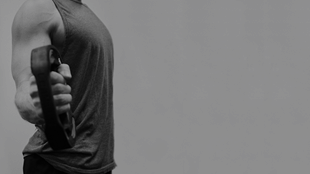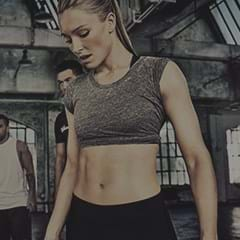What is the rotator cuff?
Some joints, like the hip, come in the form of a bony ball and socket which means they’re pretty stable, but some joints, like the shoulder, are more like a ball and saucer. While the saucer provides less stability there’s more mobility, which explains why you can move the shoulder through 360 degrees. To help hold the ball and saucer together the joint is surrounded by a tough sheath of muscles – these muscles are called the rotator cuff.
There are four rotator cuff muscles (three at the back and one at the front) and all are considered stabilizer muscles. When you’re lifting your arm above your head these muscles work together to keep the joint surfaces together.
What leads to rotator cuff issues?
When it comes to resistance training many people focus on their big muscles like pectoralis major, latissimi dorsi and deltoid. These large muscles are called mobilizers, and they all work the shoulder. As the shoulder joint is naturally unstable, if these large mobilizer muscles contract and yank on the shoulder without the rotator cuff muscle working underneath, they can actually dislocate or sublux (partially dislocate) the shoulder.
So the problem arises when people get really strong in their mobilizer muscles and their rotator cuff muscles haven’t kept up with that. There are a few theories around how this can happen; one is that if people use machine weights, or they’re just doing very simple exercises that don’t require a lot of stability, then their big muscles get stronger and stronger while their small muscles don’t get any training benefit. Many don't realize it’s an issue until they’re lifting down the bottom of a bench press, they drive a big heave out of pectoralis major and it actually creates this shift in the shoulder joint surfaces. If the rotator cuff muscles are not strong enough to hold the joint surfaces together that's when the dreaded ‘ping’ strikes and you end up with a rotator cuff tear.
So what can you do to protect your rotator cuff?
The main aim is to increase strength in your rotator cuff muscles so that when you’re using your big muscles they’ve got more integrity and they don’t keep ripping the shoulder surfaces apart.
If heavy bench presses, lat pulldowns and machine weights are a regular part of your strength training rotation, try not to do these exercises in isolation – as these will work the big muscles without any involvement of small muscles. You can prevent a rotator cuff tear by complementing your workout with exercises that provide specific benefit to the rotator cuff. Exercises that use tubing or cable rows are particularly good ways to protect and grow the rotator cuff. You can also build the rotator cuff using free weights and exercises that leverage stability, such as push ups.








